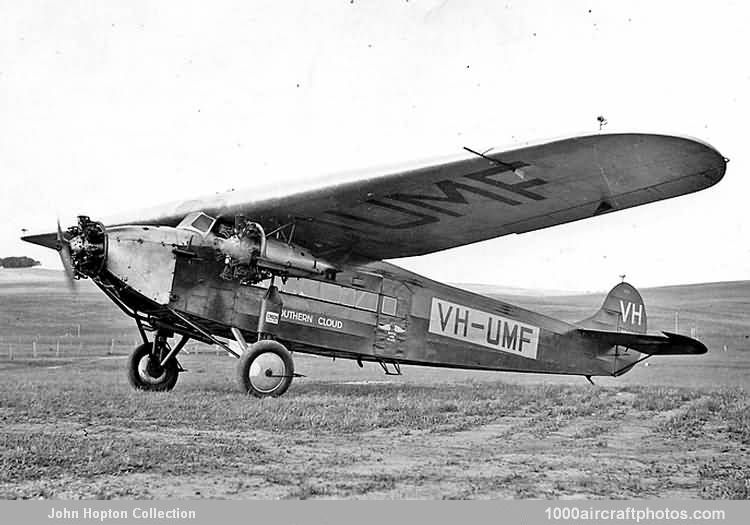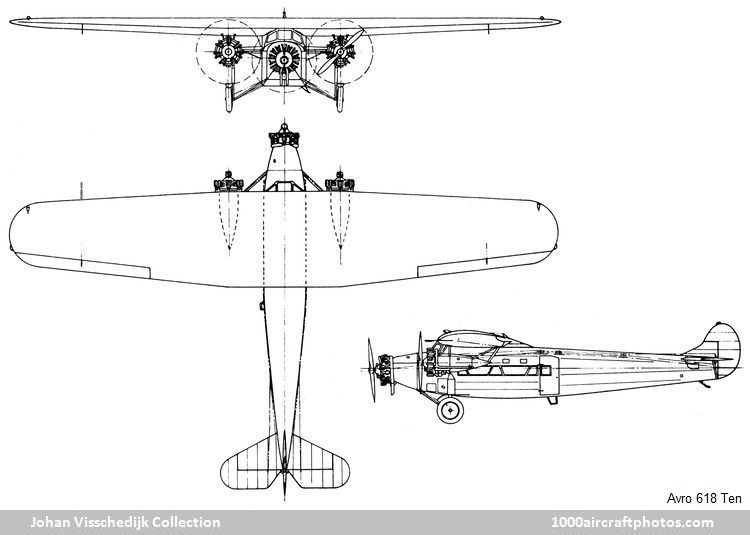Paradoxically these were the very features distrusted by the British authorities. Fortunately the British Air Ministry was already in possession of a Netherlands-built F.VIIa-3m, serialed J7986, delivered in May 1926 by Fokker's Chief Test Pilot Ir. J. 'Bertus' C.G. Grasé, who had astonished spectators by looping it on arrival over RAF Martlesham, Suffolk, UK. A series of tests during which it defeated all attempts to break it eventually cleared the way for the certification of the Avro-built version. Although generally similar to the Dutch original, it differed slightly in detail to meet British airworthiness requirements, notably in the downward tilt to the thrust line of the nose engine. Powered by three 240 hp Armstrong Siddeley Lynx IVB radials, it was known as the Avro 618 Ten, so called because it carried eight passengers and two crew.
Total production amounted to fourteen aircraft, including five for Australian National Airways (ANA) founded in 1929 by Sir Charles Kingsford Smith and Charles Ulm. The first of these was exhibited at the 7th International Aero Exhibition at Olympia, London (July 16-27, 1929) and later received British marks G-AADM (c/n 241) for test flying at Avro's works at Woodford near Manchester. The new machines were used on the daily, six hour, 500 mls (805 km) Brisbane-Sydney service opened on January 1, 1930, and the daily 480 mls (772 km) Sydney-Melbourne route inaugurated on June 1. By way of compliment to 'Smithy's veteran Fokker flagship Southern Cross, the five aircraft were named:

